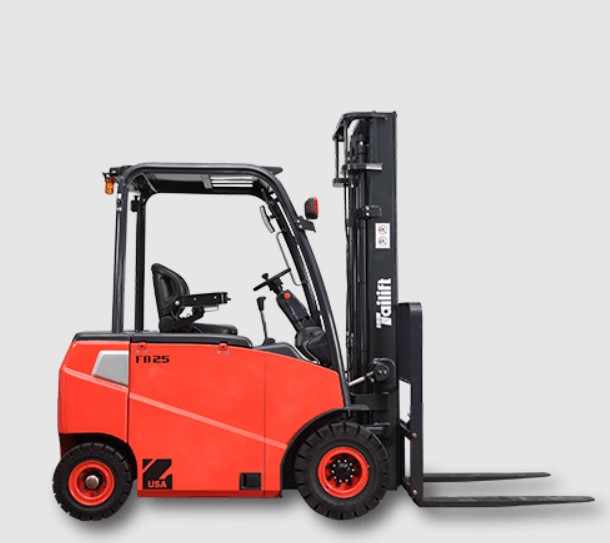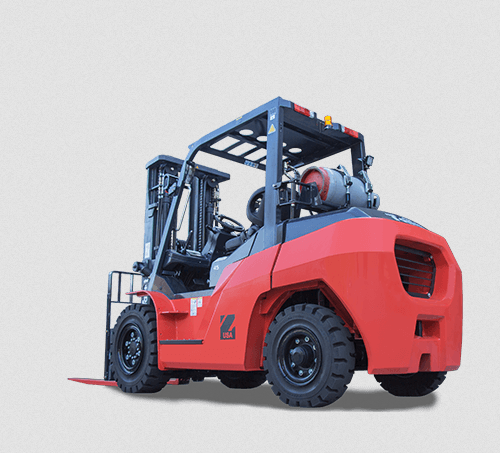
In the dynamic world of material handling, the selection of the right forklift is a critical decision that can significantly impact operational efficiency and productivity. As businesses expand and evolve, understanding the various types of forklifts available in the market becomes essential to ensure that the chosen equipment meets specific needs. This article explores the different types of forklifts and how they can be matched to diverse operational requirements, helping businesses make informed decisions that enhance their material handling capabilities.
Understanding the Types of Forklifts
Forklifts are categorized based on their power sources and design configurations, and each type serves distinct functions in various operational environments. The two primary categories are internal combustion forklifts and electric forklifts, each having subtypes that cater to specific needs.

Internal Combustion Forklifts
Internal combustion forklifts are powered by either diesel or LPG (liquefied petroleum gas). These forklifts are known for their robust performance and are particularly suited for outdoor applications and rough terrains. Their powerful engines allow them to handle heavy loads, making them an ideal choice for construction sites and industrial yards where mobility over uneven surfaces is essential.
Pneumatic Tire Forklifts: This subtype features large, air-filled tires that provide excellent traction and stability on rough and uneven surfaces. Their design makes them highly versatile for outdoor applications, where durability and power are paramount.
Cushion Tire Forklifts: Unlike their pneumatic counterparts, cushion tire forklifts have solid rubber tires that are better suited for indoor use. They offer a lower profile, making them ideal for navigating narrow aisles and tight spaces, such as warehouses and distribution centers.
Electric Forklifts
Electric forklifts have gained popularity over the years due to their environmentally friendly operation and reduced noise levels. These forklifts are ideal for indoor environments and are often used in warehouses and manufacturing facilities.
Four-Wheel Electric Forklifts: These models provide stability and balance, making them suitable for handling heavier loads. Their design allows for smooth operation and enhanced maneuverability in larger spaces.
Three-Wheel Electric Forklifts: These forklifts are designed for maximum maneuverability and are ideal for tight spaces. Their unique design allows operators to make sharp turns and navigate through narrow aisles with ease.
Stand-Up Forklifts: This type allows operators to stand while operating the forklift, which enhances visibility and reduces fatigue during long shifts. Stand-up forklifts are particularly useful in fast-paced environments where quick loading and unloading are essential.
Specialized Forklifts
In addition to the standard categories, there are specialized forklifts designed for specific applications. For instance, reach trucks are designed for high-reach applications, allowing operators to lift loads to considerable heights in narrow aisles. Order pickers enable operators to retrieve items from shelving units efficiently, making them invaluable in order fulfillment operations.
Moreover, electric pallet jacks and stackers are essential for handling smaller loads and are often used in conjunction with larger forklifts to streamline operations. Their compact design makes them perfect for navigating tight spaces and transporting goods over short distances.
Assessing Operational Needs
When determining which type of forklift is right for a specific operation, businesses must assess their unique needs and environment. Several factors should be taken into consideration, including:
Load Requirements: Understanding the weight and dimensions of the loads to be handled is fundamental. Different forklift types have varying load capacities, and choosing the right one ensures safety and efficiency.
Operating Environment: The environment in which the forklift will be used plays a significant role in the decision-making process. Indoor environments may benefit from electric forklifts, while outdoor settings may require the durability of internal combustion models.
Maneuverability Needs: Depending on the layout of the operational space, businesses must consider how much maneuverability is required. For tight aisles and compact areas, smaller, more agile forklifts are advantageous.
Frequency of Use: The intensity and frequency of forklift use can influence the choice between electric and internal combustion models. Electric forklifts may be more suitable for continuous use in indoor settings, while internal combustion models can excel in high-demand outdoor environments.
Evaluating Cost and Maintenance
Cost is an essential consideration when choosing the right forklift. Businesses should evaluate not only the initial purchase price but also the total cost of ownership, which includes maintenance, fuel costs, and potential downtime. Electric forklifts may have a higher initial investment but often result in lower operating costs over time due to reduced fuel and maintenance expenses.
Maintenance is another critical factor. Regular servicing and prompt repairs are crucial for keeping forklifts operational and safe. Businesses should look for suppliers that offer comprehensive service and support to ensure the longevity of their equipment.
Conclusion: Making the Right Choice with Tailift Material Handling USA Inc
In conclusion, selecting the right type of forklift is a pivotal decision that can enhance operational efficiency and productivity in various industries. Understanding the different types of forklifts, their applications, and assessing specific operational needs allows businesses to make informed choices that align with their objectives.
For those seeking reliable and high-quality forklifts, Tailift Material Handling USA Inc offers a diverse range of solutions tailored to meet the varying demands of businesses. Their commitment to providing exceptional products and support ensures that companies can find the right equipment to thrive in today’s competitive landscape. Investing in the right forklift is an investment in the future of operational success.







Write a comment ...